- The Nightingales Take on Big Tobacco.
- Personal involvement of a nurse in the fight against smoking.
- Through letters as evidence by family members of smokers to the tobacco companies she attended shareholders’ meetings of one of the tobacco companies, and untied with other nurses to address the marketing strategies of these tobacco companies.
- Her work in collaboration with other nurses in New Jersey had a substantial impact on the tobacco companies.
- New Jersey recently enacted a smoking ban in its casinos.
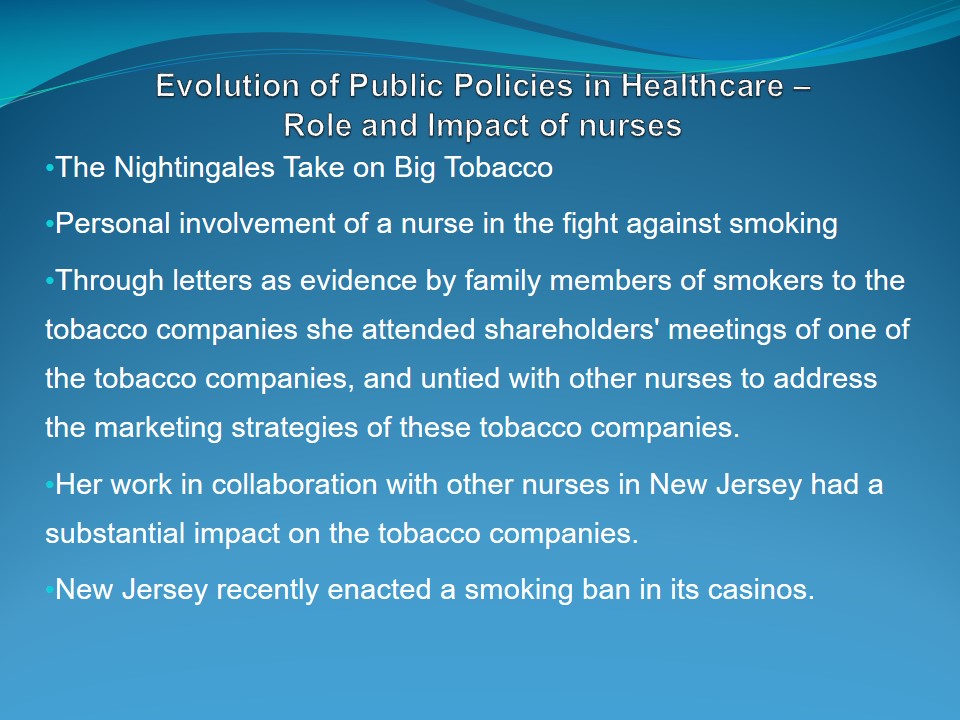
California Nurse Staffing Ratios – Effects on policy
In California in the 1990s changes in health care delivery resulted in reduced nursing jobs and consequent higher stress for nurses, affecting the safety of patients.
A civil and legal battle began between the California Hospital Association and the California Nurses Association, regarding appropriate staffing levels.
Through Nurse involvements and active participation, a mutual agreement was reached considering patient safety and economic feasibility, impacting the future of all healthcare delivery in the U.S.

Socio-economic Disparities in Health
Health Status:
- Mortality rates of African American populace are one and a half to two times that of whites due to heart disease, some types of cancer, AIDS, diabetes, homicide and suicide (Institute of Medicine, 2003).
- Death rates of African American babies is over 14 deaths per 1000 births, almost two times more than that of Whites (Institute of Medicine, 2003).
- High IM rates are also found among Puerto Ricans, native Hawaiians, and American Indians (Institute of Medicine, 2003).
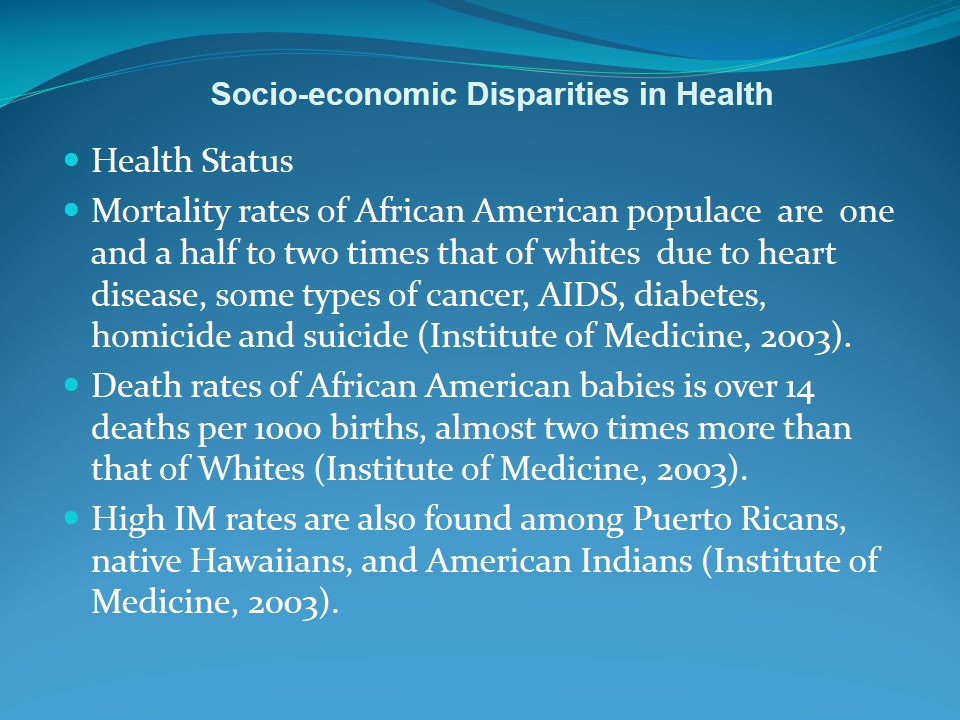
Disparities in Diseases
Comparatively high rates of diseases like asthma (for both children and adults), cancer, heart disease, and other severe diseases among Latinos and African Americans (Institute of Medicine, 2003).
High rates of diabetes are found, about 1.7 times more among non-Hispanic African Americans, 1.9 times more among Hispanics, and 2.8 times more among American Indian and Alaska Natives than among non-Hispanic white Americans of similar age (Institute of Medicine, 2003).
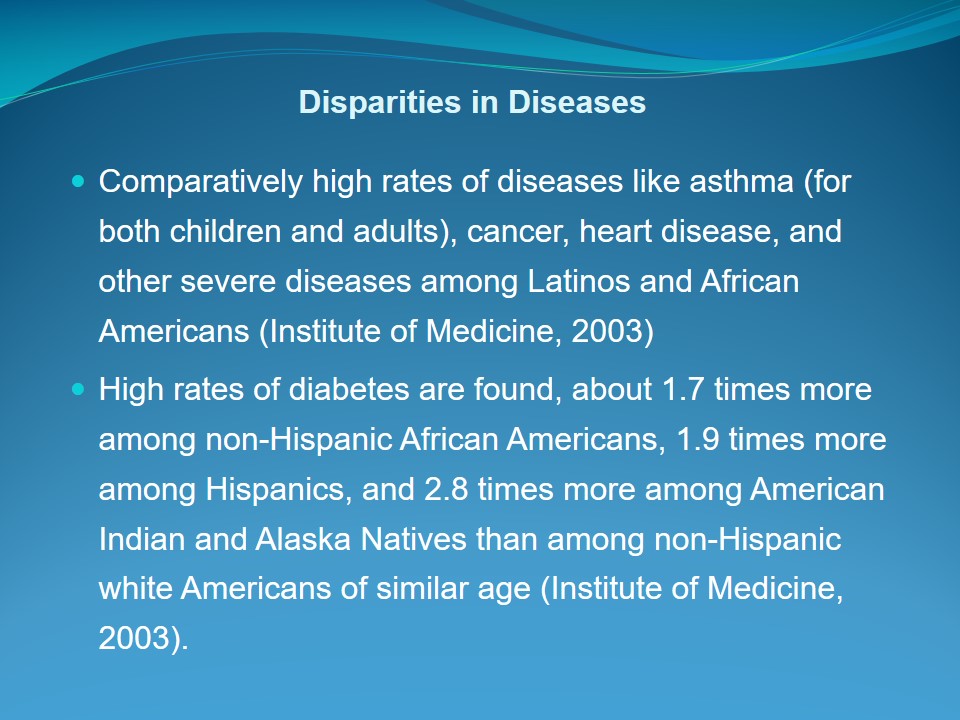
Health Policy Inequalities
Disparities in access to healthcare exist in the United States, between ethnic minorities and whites, with racial and ethnic minorities having reduced access to adequate healthcare (Weinick, Zuvekas, & Cohen, 2000).
Gender related disparities in access to healthcare – Women in the United States generally having higher levels of access to care (Weinick, Zuvekas, & Cohen, 2000).
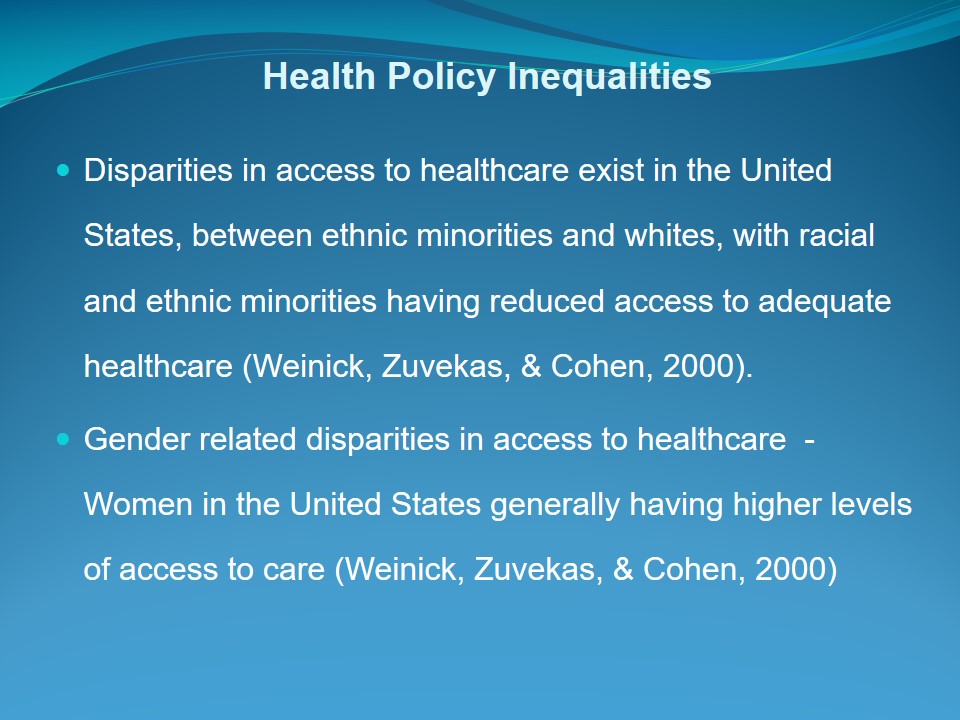
Health care Inequalities
Racial disparities in access to Healthcare – ethnic minorities generally having less insurance coverage than non-ethnic minorities (Weinick, Zuvekas, & Cohen, 2000).
For example, Hispanic Americans tend to have less insurance coverage than white Americans and receive less regular medical care (Weinick, Zuvekas, & Cohen, 2000).
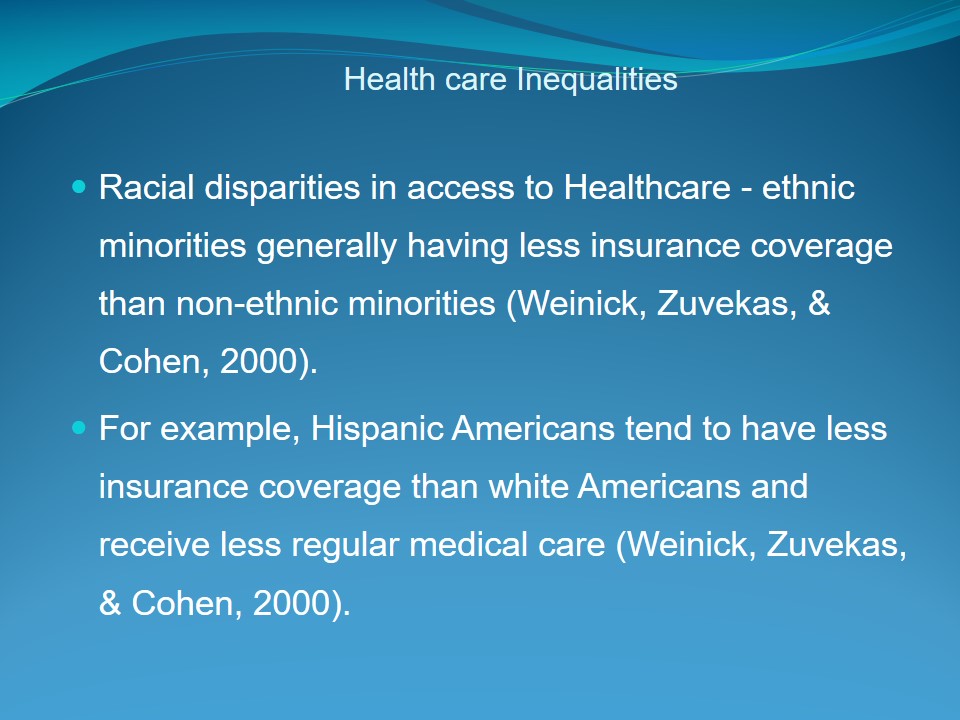
New Federalism – Health Care
New Federalism is a term coined by President Nixon and refers to the reverse swing of government power to the federal governments granting the authority of policies and programs to States rather then the centre.
States were granted the power to take local policy initiatives by the Nixon and Ford administrations.
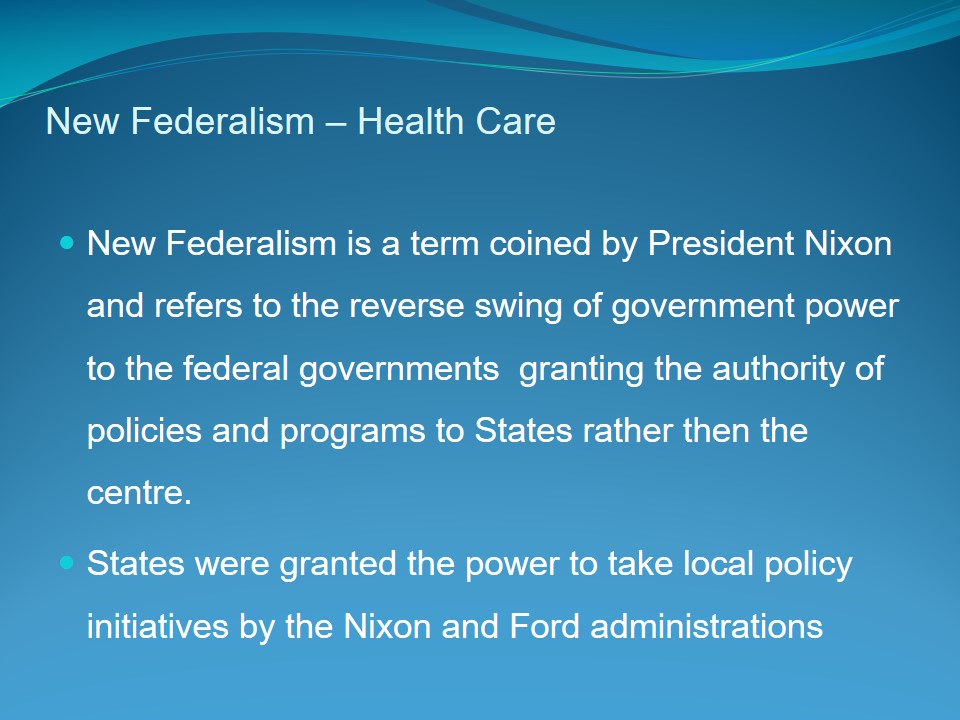
Effect of New Federalism
- Federal Government ceased to be the sole payer of Healthcare services.
- Federal government ceased to have the capacity or power to fund healthcare programs.
- Emphasis of the governments was on the rising budget and not healthcare programs for the larger good of society.
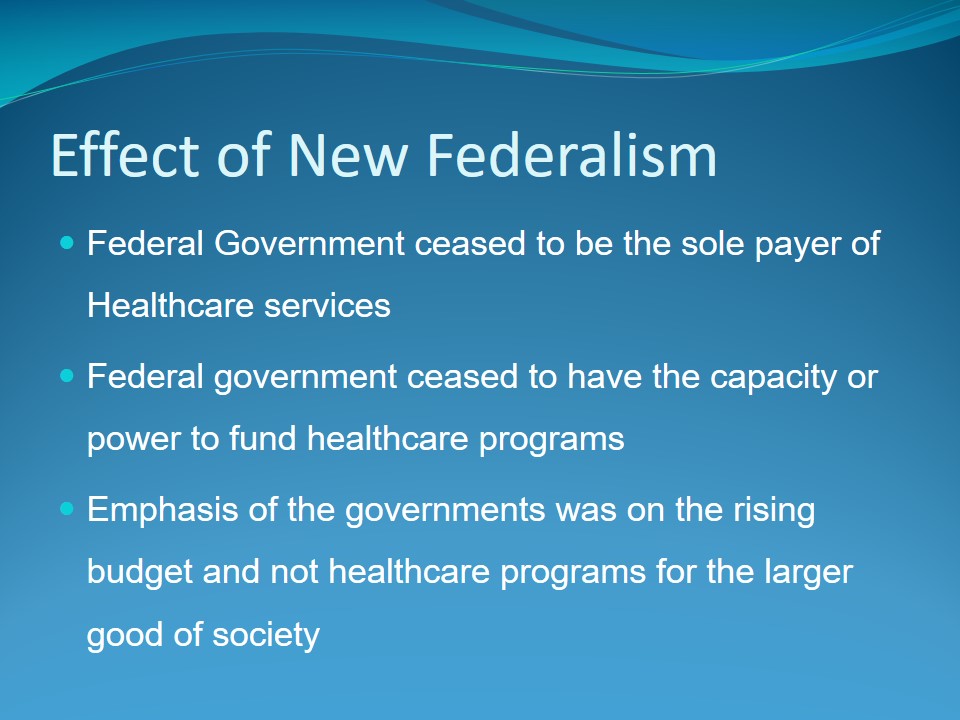
What Americans want from Healthcare
- Universal Healthcare.
- Reduced healthcare costs.
- Healthcare insurance to all American citizens.
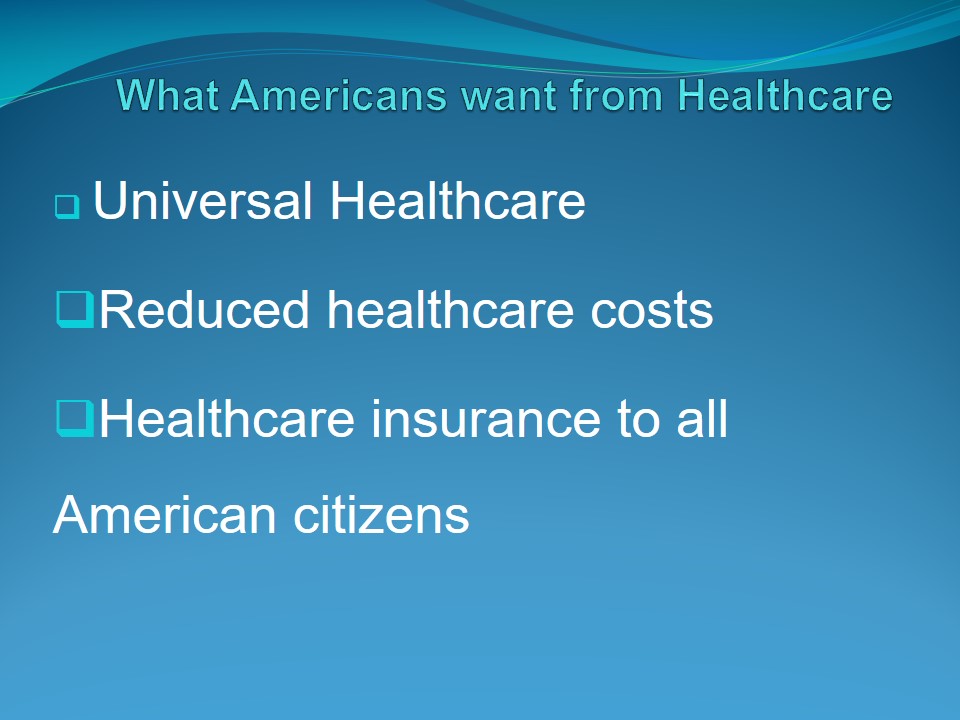
References
Institute of Medicine. Unequal Treatment: Confronting Racial and Ethnic Disparities in Healthcare. Washington, D.C.; National Academies Press; 2003.
Weinick, R. M., Zuvekas, S. H., & Cohen, J. W. (2000). Racial and ethnic differences in access to and use of health care services, 1977 to 1996. Medical care research and review : MCRR, 57 Suppl 1, 36-54.